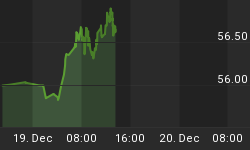As you would expect, very little has changed with regards to investor sentiment. Therefore, no comments are necessary. In fact, sentiment has become so extreme and been this way for the better part of 6 months that sooner than later the market will correct, and the indicators will have regained their "predictive" value. It is like a broken clock being right at least twice a day. It will happen. Until then, the trend is your friend.
The "Dumb Money" indicator, which is shown in figure 1, looks for extremes in the data from 4 different groups of investors who historically have been wrong on the market: 1) Investor Intelligence; 2) Market Vane; 3) American Association of Individual Investors; and 4) the put call ratio. The "Dumb Money" indicator shows that investors remain extremely bullish.
Figure 1. "Dumb Money" Indicator/ weekly
The "Smart Money" indicator is shown in figure 2. The "smart money" indicator is a composite of the following data: 1) public to specialist short ratio; 2) specialist short to total short ratio; 3) SP100 option traders. The Smart Money indicator is neutral to bearish.
Figure 2. "Smart Money" Indicator/ weekly
Figure 3 is a weekly chart of the S&P500 with the InsiderScore "entire market" value in the lower panel. Due to the holiday week, insider trading volumes were light.
Figure 3. InsiderScore Entire Market/ weekly
Figure 4 is a daily chart of the S&P500 with the amount of assets in the Rydex Money Market Fund. When the value is low, investors are fully invested and remain complacent; when the value is high, investors are fearful and seeking safety of the money market fund. The current value is just off the lowest value since the March, 2009 rally began.
Figure 4. S&P500/ Rydex Money Market Fund/ daily















